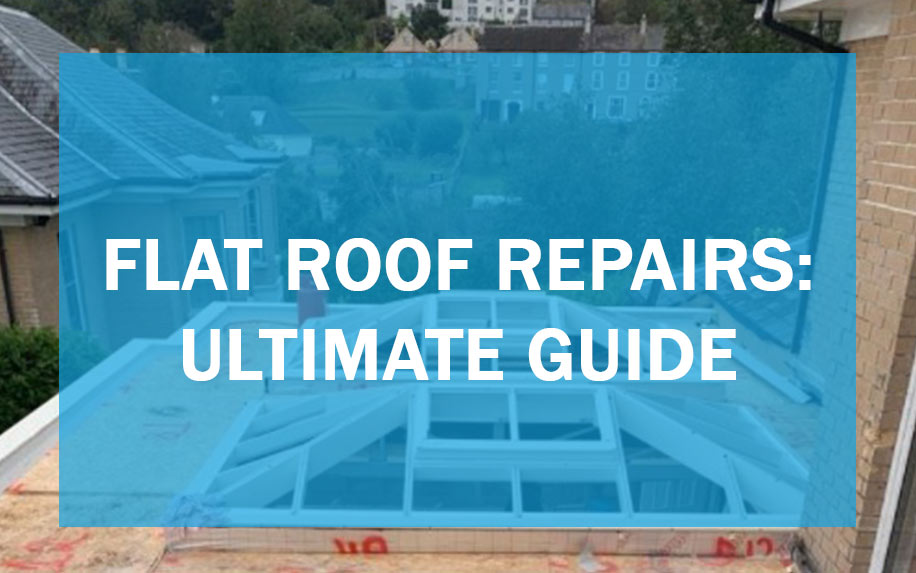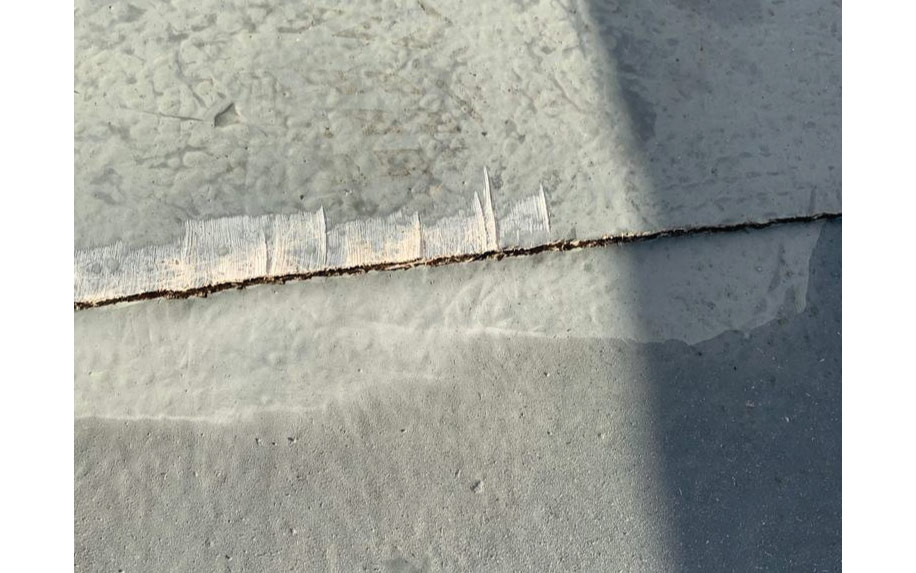

Depending on what they’re made of, many flat roofs are prone to damage and degradation. This is a particularly common issue in wet countries, like Ireland. As such, it’s vital to understand the basics of flat roof repairs, especially as roof faults can be an expensive problem.
Of course, there are a number of different kinds of flat roof systems. Each of these is prone to its own faults. Crucially, some flat roofs are more weather resistant than others. Additionally, different roofing materials have different life spans.
Today, we’ll cover everything you need to know about repairs to flat roofs, including identifying when a repair is necessary, as well as when it’s more economical to replace or even upgrade your entire roof. We’ll then explore some of the reasons that fibreglass systems are the ideal solution for flat roofs in Ireland.
Let’s start with the basics.
Why do Flat Roofs Need to be Repaired?
There are a few main reasons that the need for flat roof repairs can emerge. These are:
- Damage,
- Installation problems,
- Normal wear and tear.
How much you need to worry about each of these depends on what your roof is made of. For example, EPDM roofs are extremely prone to damage, especially from sharp objects like falling branches. Naturally, this is a major issue for roofs in Ireland.
Similarly, felt roofs have a relatively short lifespan, and will require regular repairs and maintenance due to normal wear and tear, especially when they are exposed to wet and windy conditions.
By contrast, if you invest in a fibreglass roof, issues primarily arise when there is an installation problem. Typically, this is a result of the roof being installed by an inexperienced fitter.
Additionally, all kinds of flat roofs can be prone to issues relating to poor weather conditions when they are installed, like water ingress or trapped damp. The exception to this is modern fibreglass systems, which are designed to be designed in wet conditions, as found in Ireland.
One example of this is the Dryseal fibreglass roofing system.
No matter how a flat roof fault emerges, the need for a repair is the same. Leaving an issue unresolved in the short term will lead to damage to the contents of your building. If this continues into the longer term, you can also face serious structural damage to the building itself.
With that in mind, let’s look at some of the warning signs of flat roof faults.


How to Tell When a Flat Roof Needs to be Repaired
It’s important to realise that some flat roof faults are more easily identified than others. For instance, when your roof develops a leak, it should be obvious to just about anyone that a repair is necessary.
Other problems require you to specifically seek out.
However, it’s generally better to spot the signs of a fault before it gets to the stage where a leak develops. As such, it’s important to regularly check your flat roof for the warning signs of a leak. Your roof should be thoroughly inspected at least once a year.
Luckily, most of these are easy to spot with the naked eye. Issues which indicate the need for flat roof repairs to most materials include:
- Pooling of water on the roof’s surface,
- Cracks or holes in the surface of the roof,
- Blistering or bulging,
- Mould on ceilings or interior walls,
- Lifting or damaged joints in the roofing material.
For any of these warning signs, the earlier you act, the better.
Can You Perform Flat Roof Repairs Yourself?
Damage to flat roofs can range from minor isolated issues, to much more severe problems. Minor issues with most flat roofing systems can be addressed by competent DIYers. Depending on the material, this typically involves either a roll-on sealant, or a patch-job to the affected area.
More serious issues can be addressed by a professional who specialises in the relevant kind of roofing
However, these kinds of repairs are only ever really a temporary solution. That is, if your flat roof is prone to faults or damage in the first place, then these issues are almost guaranteed to reoccur.
In trying to prolong the lifespan of your flat roof, it’s common to get sucked into a cycle of endless leaks and repairs.
Let’s look at the alternative to flat roof repairs.
Should You Repair or Replace a Flat Roof?
Like most building maintenance decisions, this all comes down to money. When a flat roof begins to develop problems, it’s worth considering whether it’s more economical in the long term to repair or replace it.
Repairing an existing roof might seem to be the prudent choice, but in reality, you’re often only prolonging the cost of upgrading your flat roof.
This is particularly true for less modern flat roof systems. For example, concrete roofs are relatively cheap and easy to repair, but they also offer poor insulation against the elements. As such, the money you save through short-term repairs may quickly be offset by other costs.
Similarly, felt roofs can have a lifespan as short as five years. In this time, it’s likely that repairs will also be necessary. By contrast, a modern system, such as a fibreglass flat roof has a lifespan of several decades, with little need for repairs.
As such, a fibreglass flat roof system will generally cost less over its lifespan than less modern roofing systems.
How to Prevent Flat Roof Problems
The best way to prevent problems which require flat roof repairs is to choose the right roofing system based on the local weather conditions. This is absolutely essential in a country like Ireland, which faces extreme weather conditions.
To prevent the costs and headaches associated with endless flat roof repairs, the best option for the Irish market is fibreglass. Specifically, fibreglass systems, such as Scott Bader’s Crystic Roof, are unparalleled for their weather resistance, low upkeep, and long-term affordability.
Additionally, faults with properly installed fibreglass roofs are incredibly rare. In fact, a fibreglass flat roof which is installed by experienced, product-certified professionals should almost never develop serious faults during its service life.
Nationwide FIbreglass have over a decade of experience of delivering high quality, reliable fibreglass roofing systems to domestic and commercial customers throughout the island of Ireland. If you’d like to discuss investing in an upgrade to your flat roof, speak to our expert team today.
